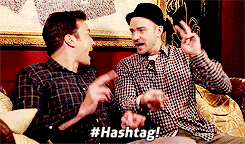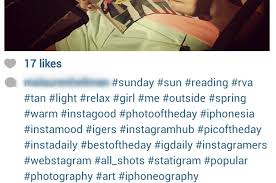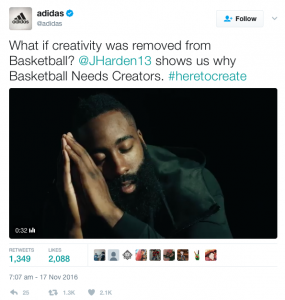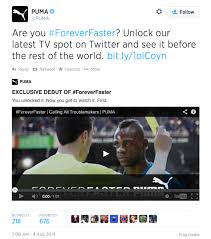 One of the newest forms of social media is micro-blogging, most commonly associated with Twitter. Twitter consists of ‘tweets’ mesages which can instantaneously be transmitted across a large scale network, and has become the most popular micro-blog tool since its launch in 2006 (Jiang and Erdem, 2016; Burton & Soboleva, 2011). It has reached 554 million users worldwide in 2013 with 9,100 tweets every second, making it an effective and viable tool, if used in the right way (Jiang and Erdem, 2016). This blog is going to explore the factors and features a business needs to consider when creating an effective Twitter marketing campaign.
One of the newest forms of social media is micro-blogging, most commonly associated with Twitter. Twitter consists of ‘tweets’ mesages which can instantaneously be transmitted across a large scale network, and has become the most popular micro-blog tool since its launch in 2006 (Jiang and Erdem, 2016; Burton & Soboleva, 2011). It has reached 554 million users worldwide in 2013 with 9,100 tweets every second, making it an effective and viable tool, if used in the right way (Jiang and Erdem, 2016). This blog is going to explore the factors and features a business needs to consider when creating an effective Twitter marketing campaign.
Use Hashtags
A main factor that companies need to consider when marketing on Twitter are Hashtags. Tweets are classified as high-interactive, if they contain a hastag, as it allows users to create or follow a thread of discussion (Burton and Soboleva, 2011). With the strategic use of hashtags, the tweeted content can be broadcasted to a wider audience and speed information spread, if used effectively could go viral (Wang et al, 2016). Hashtags can be effective when a business is having a sale or promotion as a hashtag followed by the promo code, allows sales to be tracked by the people that used the Twitter-specific code (Twitter, 2017a).
Patel (2015) supports this by stating that tweets with hashtags get two times more clicks, retweets, favourites, and replies than tweets without hashtags. Thus increasing market presence as hastags enhances the visibility of messages by helping construct information-sharing network and bridge diverse social groups with a common interest (Wang et al, 2016). A good example of a effective campaign using a hashtag is Coca-Cola’s #Choosehappiness (Campaign, 2016), see below. The company asked consumers to tweet their favourite variant of Coca-Cola alongside the hashtag, which was connected to the Coca-Cola machine below, were displayed their tweet on the screen and released a free shirt (Deighton, 2015). This correlates directly with the company’s values of Happiness and sustained by evoking emotion, like happiness, which further engaged consumers on Twitter. People quickly took to Twitter to share their messages of positivity, all through the Coca-Cola name. This indicates that with the use of the # it allowed Coca-Cola to increase awareness of the campaign due to exposure and form a discussion that favoured the brand image.
However, there is a limit to the usage of hashtags on a single tweet (Patel, 2015). It is recommended that the maximum amount of hastags to use in one single tweet is two, as any more than that can dimish a companies engagament (Patel, 2015). In contrary to Instagram where the limit is endless and still manages to retain high engagement, as seen below.
Check out how to create a Hashtag just for your business
Use different media types
Chaney (2016) states that the most effective way for a company to use tweets is by including different media types. Tweets that contain videos get retweeted more than those that only contain text (Chaney, 2016), shown below. This enables companies to showcase their personality and differentiate themselves, as it may be difficult to get a message across or the brands personality with Twitter’s 140 characters rule constraint (Jackson, 2015). Quinn (2015) identified McDonalds as a company that used a videos in the right way. McDonalds used this technique to launch a campaign to promote their products in a visually fun way. Thus engaging consumers by driving retweets and favourites, which will probably drive consumers to go McDonalds.

Moreover this technique can be used to build brand loyalty by providing consumers with VIP access to backstage events that companies host, most commonly used by fashion brands using video content like vines or livestreaming (Macmillian, 2014). This offers transparency and value to the consumer by showing them how products are created or parts of the company that they wouldnt get to see (Jackson, 2016). Thus inviting them on the experience or journey of the product, which boosts engagement.
However, when marketing with videos on Twitter, videos need to be relevant and meaningful as Twitter can act as an electronic word of mouth and gain the company a negative reputation and brand image (Trimble, 2015; Burton & Soboleva, 2011). For example Pepsi recently tweeted a promotional video containing Kendall Jenner giving a policeman a pepsi when there are uprest (Twitter, 2017b), see below. Unfortuanaly, Pepsi did not consider the relevance of the content of the video with the issue of black people being killed. People across the US were tweeting their negative opinions about the ad by using the #PepsiLivesMatter (Twitter, 2017b), see below. Although Pepsi quickly responded by deleting the tweet and tweeting a picture with long apology to Twitter users, it goes to show that one normal video on Twitter could lead to an uproar of negative press for the company.
The pepsi ad: https://www.youtube.com/watch?v=73P9STckPLw
Check out the five best practices for promoted video on Twitter
Use Influencers
Lastly companies should consider being creative when campaigning on Twitter by including influencers (Adweek, 2014). Kinney & Ireland (2015) support this by stating that when positive influences are used in a Twitter ad it has greater chance of attracting and maintaining consumers attention. This is effective as it will allows companies to target their audience more easily, especially younger audiences, which may be hard to reach. However, the overall image and brand of the business needs to be taken in consideration when selecting an influencer to ensure tweets are relevant. Kinney & Ireland (2015) state that influences, expertise and relevance work together to form trust, leading to favorable brand attitudes. For instance the Adidas ad called #heretocreate on Twitter featuring James Harden, to attract the younger audiences, which most likely will be big fans of the player, to drive sales. The effectiveness of the campaign can be seen in the re-tweets and favourites, compared to a normal campaign without an influencer, see below. Nonetheless, if the fit is not correct and the influencer’s image does not align with the brand’s image then it is likely to have little value (Hendriksz, 2016).
For other examples of campaigns using Twitter as their platform to advertise: Check out the best Twitter campaigns and why they work
Check this video to optimise campaign performance with Twitter Ads.
(Twitter for Business, 2014)
How to check the success of the Twitter campaign:
- Businesses can use Twitter Analytics to track impressions, cost-per-result across all different campaigns and online n tracking. This will help you undertsand your customers better and the level of engagement (Twitter, 2017c).
- With tweets you can see the number of re-tweets and favourites to show the level of engagement and impact. For example:
Overall, Twitter is a effective and creative way to campaign products, as there are lots of choices of how they can differentiate themselves from others. Despite the limitiations, if businesses understand their target audience and the casual conversational feel of Twitter it will build brand loyalty.
References
Adweek, (2014) 7 Of The Most Creative Twitter Campaigns. [Online] Available at: http://www.adweek.com/digital/7-creative-twitter-campaigns/ [Accessed 5 April 2017]
Burton, S. & Soboleva, A. (2011) Interactive or reactive? Marketing with Twitter. Journal of Consumer Marketing, Vol. 28, pp.491-499
Campaign, (2016) Twitter reveals insights from best social campaigns of 2015. [Online] Available at: http://www.campaignlive.co.uk/article/twitter-reveals-insights-best-social-campaigns-2015/1380415 [Accessed 5 April 2017]
Chaney, P. (2016) 25 Ways to Use Twitter for Marketing. Practical Ecommerce. [Online] Available at: http://www.practicalecommerce.com/articles/119922-25-ways-to-use-twitter-for-marketing [Accessed 5 April 2017]
Deighton, K. (2015) Coca-Cola creates Twitter-powered vending machines. Event Magazine. [Online] Available at: http://www.eventmagazine.co.uk/coca-cola-creates-twitter-powered-vending-machine/brands/article/1359593 [Accessed 5 April 2017]
Hendriksz, V. (2016) Tapping into the rise of the Digital Influencers. Fashion United. [Online] Available at: https://fashionunited.uk/news/fashion/tapping-into-the-rise-of-the-digital-influencers/2016012719197 [Accessed 5 April 2017]
Jackson, D. (2015) How to use Twitter Effectively. Sprout Social. [Online] Available at: http://sproutsocial.com/insights/how-to-use-twitter-effectively/ [Accessed 5 April 2017]
Jackson, D. (2016) A Comprehensive Guide to Mastering Twitter Video. Sprout Social. [Online] Available at: http://sproutsocial.com/insights/twitter-video/ [Accessed 5 April 2017]
Jiang, L. & Erdem, M. (2016) Twitter marketing in multi-unit restaurants: Is it a viable marketing tool? Journal of Foodservice Business Research,
Kinney, L. & Ireland, J. (2015) Brand Spokes-Characters as Twitter Marketing Tools. Journal of Interactive Advertising, Vol.15, pp. 135-150
Macmillan, G. (2014) Eight creative ways fashion brands can use Twitter. Twitter. [Online] Available at: https://blog.twitter.com/en-gb/2014/eight-creative-ways-fashion-brands-can-use-twitter [Accessed 5 April 2017]
Patel, N. (2015) How to Harness The Power Of The Hashtag As an Entrepreneur. Forbes. [Online] Available at: http://webcache.googleusercontent.com/sites/undefined/undefined/undefined/undefined/undefined/?q=cache:Z-d7aDKHS0YJ:www.forbes.com%2Fsites%2Fneilpatel%2F2015%2F08%2F17%2Fhow-to-harness-the-power-hashtag-as-an-entrepreneur%2F%20&cd=1&hl=en&ct=clnk&gl=uk&client=safari#7ebd85a28344 [Accessed 5 April 2017]
Quinn, S. (2015) 4 Ways to Use Twitter Video for Your Business. Social Media Examiner. [Online] Available at: http://www.socialmediaexaminer.com/use-twitter-video-for-your-business/ [Accessed 5 April 2017]
Smith, K. (2016) The Best Twitter Campaigns and Why They Work. Brandwatch. [Online] Available at: https://www.brandwatch.com/blog/best-twitter-campaigns-why-they-work/ [Accessed 5 April 2017]
Trimble, C. Why online video is the future of content marketing. The Guardian. [Online] Available at: https://www.theguardian.com/small-business-network/2014/jan/14/video-content-marketing-media-online [Accessed 5 April 2017]
Twitter, (2017a) Guidelines for Promotions on Twitter. [Online] Available at: https://support.twitter.com/articles/68877 [Accessed 5 April 2017]
Twitter, (2017b) #PepsiLivesMatter. [Online] Available at: https://twitter.com/hashtag/PepsiLivesMatter?src=hash [Accessed 5 April 2017]
Twitter, (2017c) How to use Twitter Analytics. [Online] Available at: https://business.twitter.com/en/analytics.html [Accessed 6 April 2017]
Twitter, (2016) Five best practices for Promoted Video on Twitter. [Online] Available at: https://marketing.twitter.com/apac/en_gb/insights/five-best-practices-for-promoted-video-on-twitter.html [Accessed 5 April 2017]
Twitter for Business, (2014) A new way to optimze campaign performance with Twitter Ads. Youtube. [Online] Available at: https://www.youtube.com/watch?v=0fSLYSMYZrU&t=7s [Accessed 5 April, 2017]
Wang, R., Liu, W., & Gao, S. (2016) Hashtags and information virality in networked social movement: Examining hashtag co-occurrence patterns. Online Information Review, Vol. 40, pp.850-866
York, A. (2016) How to Create a Hashtag Just for Your Business. Sprout Social. [Online] Available at: http://sproutsocial.com/insights/create-a-hashtag/ [Accessed 5 April 2017]





